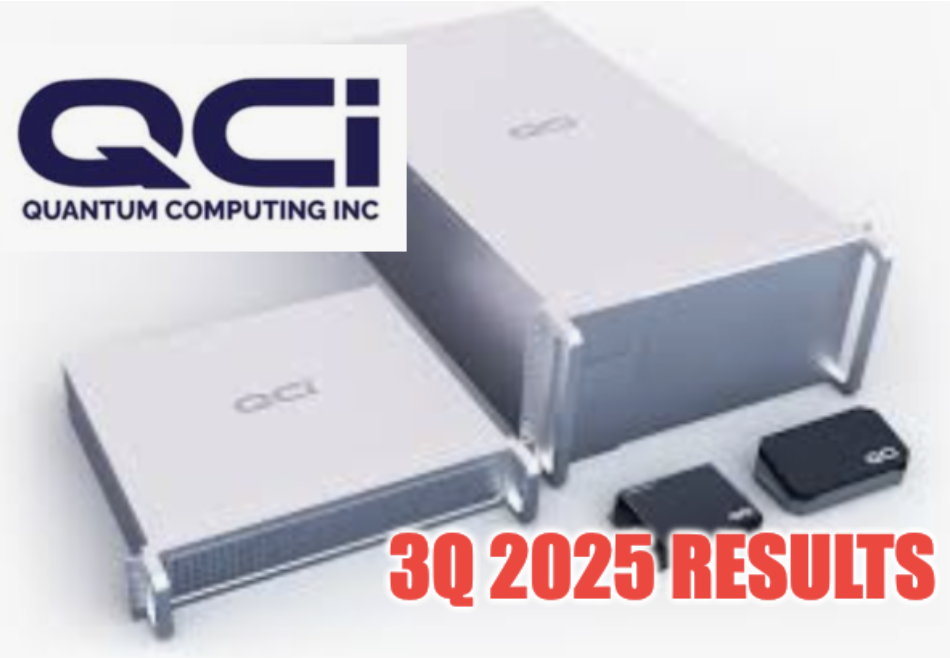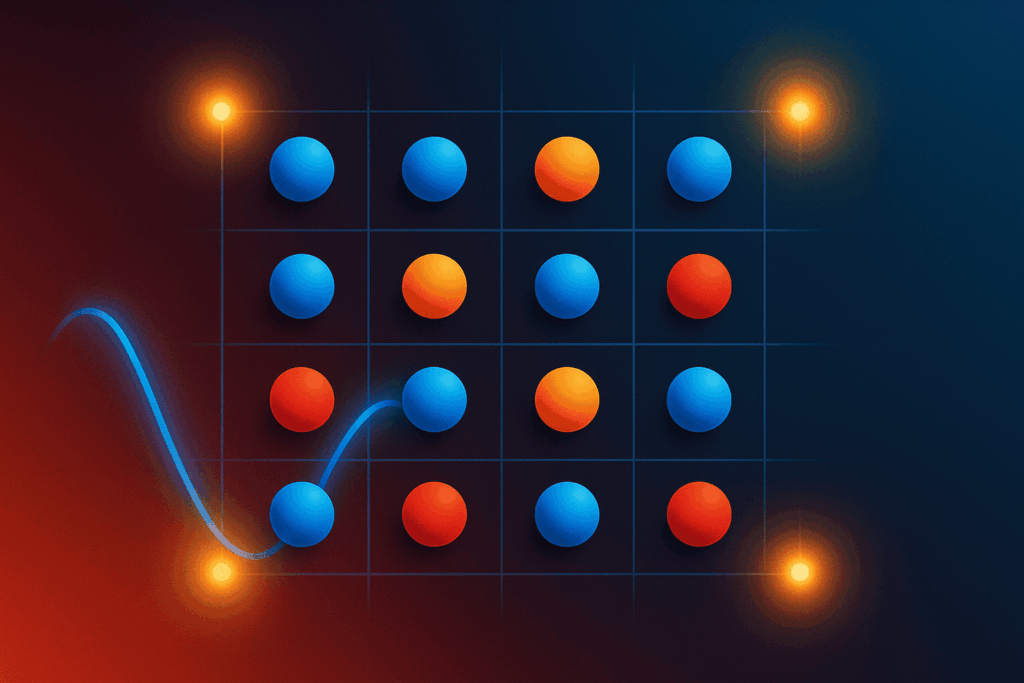Insider Brief
- Quantum Computing Inc. reported higher third-quarter revenue but continued to rely on investment income and derivative-related accounting gains to offset rising operating costs, while two large equity raises significantly expanded its balance sheet.
- The company recorded $384,000 in revenue and $10.5 million in operating expenses, with net income of $2.4 million driven largely by a $9.2 million derivative liability revaluation gain and $3.5 million in interest income.
- QCi highlighted early commercial traction in quantum cybersecurity, ongoing NASA research collaborations, and progress at its Tempe photonic chip foundry, supported by more than $1.25 billion in recent private-placement financing.
Quantum Computing Inc. reported higher revenue in the third quarter but continued to rely heavily on investment income and accounting adjustments to offset rising operating costs, while two large equity raises significantly reshaped the company’s financial position. The mixed picture combines nascent commercial progress with a reliance on financing that continues to play an outsized role in the company’s results.
In a statement, the company reported third-quarter revenue of $384,000, up from $101,000 a year earlier, driven by increased research and development service contracts, custom hardware work and the first recognition of revenue tied to cloud access for QCi’s Dirac-3 quantum optimization system. Gross margin improved to 33% from 9% during the same period last year, though the company noted that margin remains volatile at its current scale and that year-over-year comparisons are not yet meaningful.
Operating expenses rose sharply, reaching $10.5 million, nearly double the $5.4 million the company recorded in the third quarter of 2024. QCi officials attributed the increase to continued investment in research, engineering and manufacturing as it expands staffing and prepares for larger-scale photonic chip production. The company’s spending underscores its strategy to grow ahead of demand in a quantum market still in its early stages.

Despite the small revenue base and higher costs, QCi reported net income of $2.4 million, or $0.01 per basic share, compared with a net loss of $5.7 million a year ago. The shift into profitability was driven not by operational performance but by a $9.2 million gain from the mark-to-market revaluation of a derivative liability associated with QPhoton warrants, along with $3.5 million in interest income.
Without those items, losses would have widened sharply, totaling roughly $10 million for the quarter. These dynamics are typical of companies with complex capital structures and large cash balances, but they also mean that net income may remain vulnerable to the typical market-driven fluctuations rather than business activity.
Dr. Yuping Huang, Interim Chief Executive Officer of QCi, said in the statement: “The third quarter marked another important step forward for QCi as we strengthened our balance sheet, deepened commercial and government relationships, and advanced our roadmap toward scalable quantum and photonic manufacturing. Revenues increased 280% year-over-year for the three months ended September 30, 2025, reflecting our sales progress and increasing demand for our products, including a recent sale to a top 5 U.S. bank. We ended the third quarter with $352 million in cash and $461 million in investments, and subsequent to the quarter raised an additional $750 million, giving us a substantial liquid position of over $1.5 billion today to execute our long term growth strategy. Our integrated photonic approach continues to differentiate QCi as we work to bring practical quantum technologies out of the lab and into the hands of people. We remain focused on technical execution, strategic hiring, and thoughtful scaling of our foundry and quantum systems to meet growing global demand.”
Balance Sheet Expands After Two Equity Raises
The most notable shift in QCi’s results came on the balance sheet. Total assets rose to $898.2 million, up from $153.6 million at year-end 2024. The increase largely reflects the company’s significant capital raises. Earlier in the quarter, the company secured $500 million in gross proceeds from a private placement of common stock. Shortly after quarter-end, QCi raised an additional $750 million through another private placement.
Cash and cash equivalents grew to $352.4 million, an increase of $273.5 million from December 2024. The company also reported $460.6 million in investments as of September 30, lifting its overall liquidity and providing a substantial cushion for continued R&D and manufacturing expansion.
Total liabilities declined to $20.3 million, down $26 million from year-end, driven by a lower derivative liability. Shareholders’ equity climbed to $877.9 million, reflecting the new capital inflows.
The company’s robust financial position now stands in sharp contrast to its modest revenue base. The position means that future performance will likely hinge on how effectively QCi deploys this capital to build sustainable commercial traction.
Growing Commercial Activity in Quantum Security
In the statement, QCi emphasized growing demand for its quantum AI and cybersecurity offerings during the quarter, pointing to what it described as increased commercial traction. The most prominent update was a purchase order from a top five U.S. bank for the company’s quantum security solutions. The company characterized this as its first U.S. commercial sale in quantum cybersecurity.
Importantly, the company did not immediately disclose the size of the contract or timeline for deployment. The involvement of a large financial institution signals early interest in quantum-safe security from highly regulated industries, but this type of activity generally begins with pilot deployments rather than large-scale implementations.
The company continued its collaboration with NASA’s Langley Research Center, advancing work on a project that applies the Dirac-3 quantum optimization system to the challenge of removing solar noise from space-based LiDAR data, according to the company. They added that the program is intended to explore whether quantum optimization techniques can improve signal reliability.
NASA partnerships often focus on exploratory research rather than immediate commercialization, and QCi described the work as part of its broader push to demonstrate scientific applications of its technology.
Photonic Chip Foundry Ramps Small-Batch Production
QCi reported progress at its Tempe, Arizona thin-film lithium niobate (TFLN) photonic chip foundry, referred to internally as Fab 1.
The company said it continued to stabilize production processes and ramp small-batch manufacturing in preparation for early customer orders. Management described ongoing work to refine workflows and strengthen discussions with commercial and academic partners.
The company also reiterated plans for Fab 2, a larger facility designed to support higher-volume production. No timelines or capital expenditure estimates were reported.
For now, Fab 1 remains in early-stage operation, a phase that typically requires process validation, yield improvement and a clear pathway to volume revenue — topics the company did not quantify in their update.
Industry Engagement and Partnerships
QCi highlighted increased industry engagement, noting participation in conferences including the European Conference on Optical Communication, Quantum.Tech Europe, Quantum World Congress, the IEEE International Conference on Quantum Computing and Engineering, and others. The company also joined the Quantum Economic Development Consortium (QED-C), aligning it with broader industry standardization and policy efforts.
Beyond events, QCi continued to grow its engineering and operations teams. The company said it is focused on attracting talent to support its research, production and long-term roadmap.

















